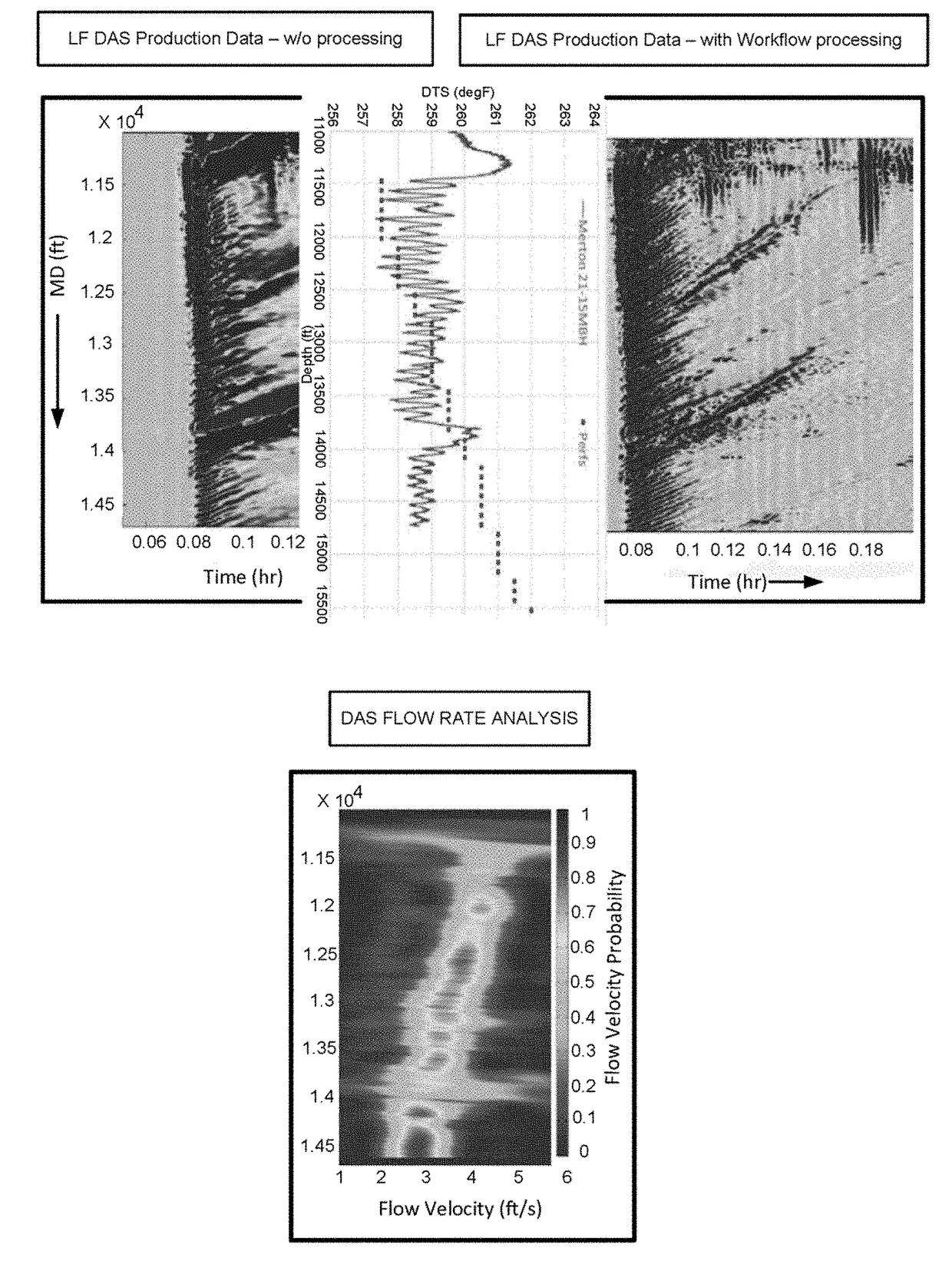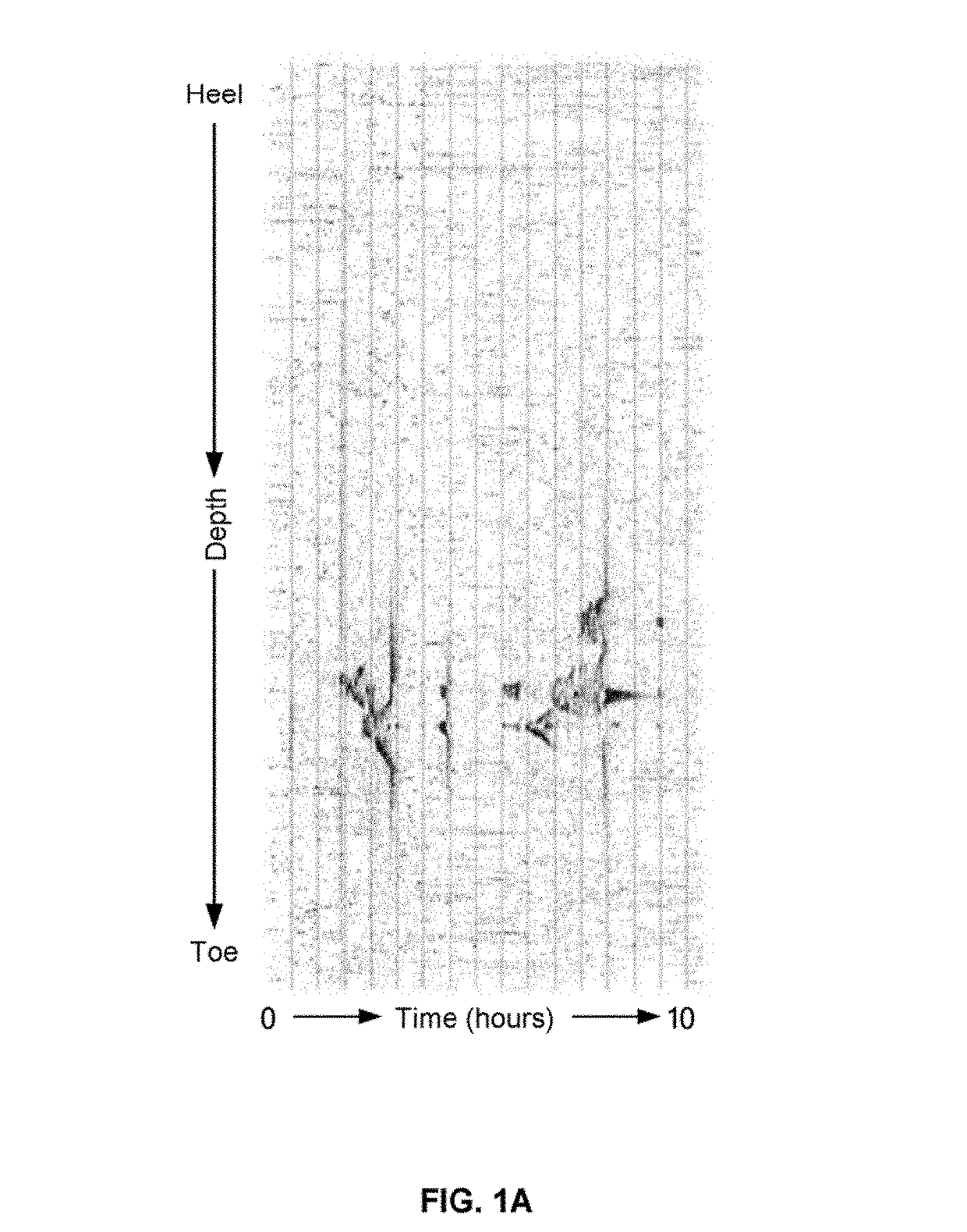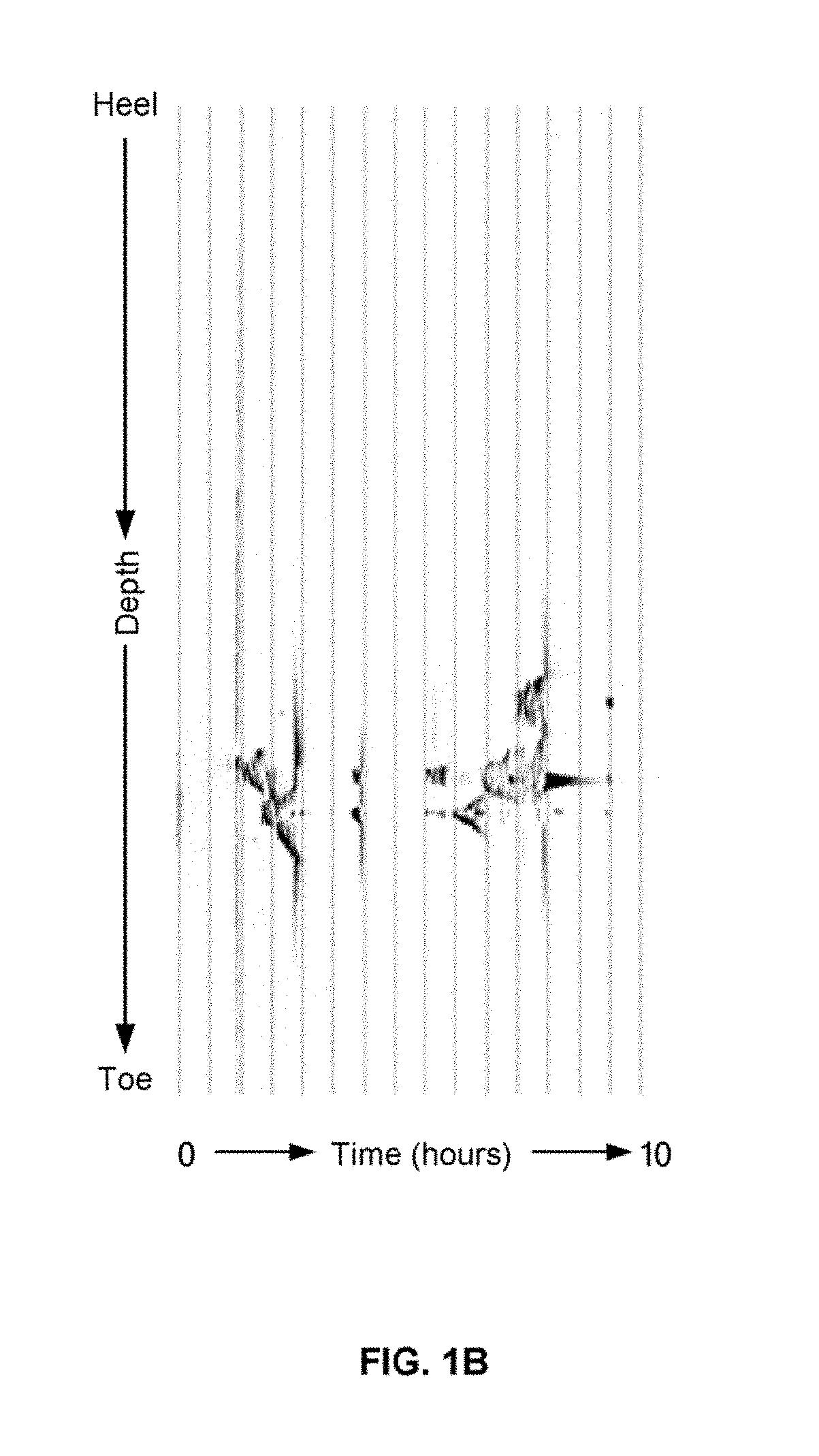Low-frequency das snr improvement
a low-frequency das and snr technology, applied in the field of well logging techniques, can solve the problems of increasing the logging time on the well, affecting the accuracy of the calculated snr, and the mechanical effectiveness of the type of logging tool, so as to achieve the effect of increasing the calculated snr accuracy
- Summary
- Abstract
- Description
- Claims
- Application Information
AI Technical Summary
Benefits of technology
Problems solved by technology
Method used
Image
Examples
Embodiment Construction
[0075]Low-Frequency DAS acquisitions have shown promise as a well logging technique with high spatial and temporal resolution for all aspects of oil and gas production. However, the data has a series of noise sources and signal interference mechanisms that can hinder analysis and affect decision-making. These interferences include spike noise, which are often associated with phase errors in the interrogator, low-frequency drift, vibrations in fiber housing, thermal recoupling and artifacts created from filtering techniques. Thus, improvements to the data are needed to facilitate optimization of development and production plans and reduce costs and errors.
[0076]Unfortunately, the significantly low SNR present in low-frequency DAS acquisitions can make analysis much more difficult or impossible. The described workflow uses a series of signal processing techniques for specific types of low-frequency DAS analysis. This allows for selective application of the techniques based on the inte...
PUM
 Login to View More
Login to View More Abstract
Description
Claims
Application Information
 Login to View More
Login to View More - R&D
- Intellectual Property
- Life Sciences
- Materials
- Tech Scout
- Unparalleled Data Quality
- Higher Quality Content
- 60% Fewer Hallucinations
Browse by: Latest US Patents, China's latest patents, Technical Efficacy Thesaurus, Application Domain, Technology Topic, Popular Technical Reports.
© 2025 PatSnap. All rights reserved.Legal|Privacy policy|Modern Slavery Act Transparency Statement|Sitemap|About US| Contact US: help@patsnap.com



